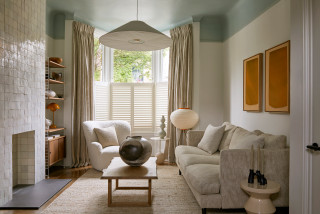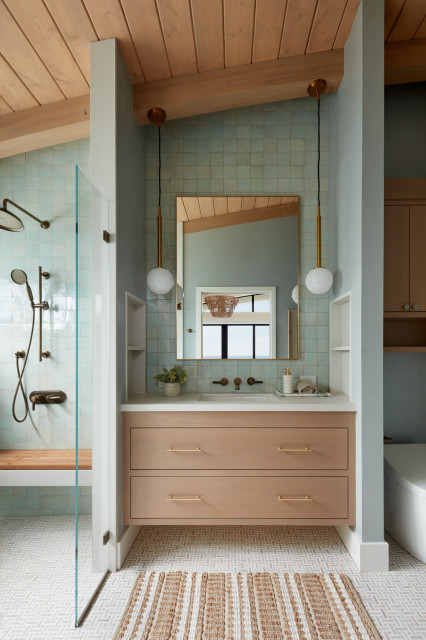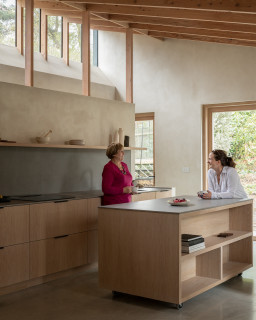Multigenerational Design
Storey designed this house just outside Bristol, England, to accommodate three generations.
Multigenerational design is key to inclusive design, since it covers a number of demographics at once: new mothers, young children, young adults still living at home, older people and those with mobility difficulties or low sight or hearing. Create a home that works for them all and you’re well on the way to a fully future-proofed space.
“What I always try to consider is how a space will flex and adapt, not just to everyday life, but in years to come,” Storey says. “So think, are you going to have children? Do you have a parent coming to live with you? How would the space accommodate them?” This project features generous circulation space, step-free surfaces, bedrooms downstairs and a self-contained suite upstairs.
With mobility equipment in mind, Storey advises having electrical outlets in more places than you think you’ll need them so different layouts and needs can easily be accommodated. “You could put one near the entrance or outside, so a mobility scooter could be charged,” she suggests. “More sockets also mean you can provide more lighting, adjusting levels for older eyes.”
Similarly, have easy-to-press switches in a contrasting color to your walls so they’re easy to see. And position them at a good height for all ages — about 3⅓ to 4 feet is perfect, Storey says.
For older inhabitants and the very young, factor in thresholds between rooms. “Make those transitions as seamless as possible. If you do have steps, highlight them — perhaps with different colors for the edge or risers and the treads,” Storey says. “Contrast is really helpful for all ages.”
Design-Build Pro Shares Key Features for Accessible Spaces





Storey designed this house just outside Bristol, England, to accommodate three generations.
Multigenerational design is key to inclusive design, since it covers a number of demographics at once: new mothers, young children, young adults still living at home, older people and those with mobility difficulties or low sight or hearing. Create a home that works for them all and you’re well on the way to a fully future-proofed space.
“What I always try to consider is how a space will flex and adapt, not just to everyday life, but in years to come,” Storey says. “So think, are you going to have children? Do you have a parent coming to live with you? How would the space accommodate them?” This project features generous circulation space, step-free surfaces, bedrooms downstairs and a self-contained suite upstairs.
With mobility equipment in mind, Storey advises having electrical outlets in more places than you think you’ll need them so different layouts and needs can easily be accommodated. “You could put one near the entrance or outside, so a mobility scooter could be charged,” she suggests. “More sockets also mean you can provide more lighting, adjusting levels for older eyes.”
Similarly, have easy-to-press switches in a contrasting color to your walls so they’re easy to see. And position them at a good height for all ages — about 3⅓ to 4 feet is perfect, Storey says.
For older inhabitants and the very young, factor in thresholds between rooms. “Make those transitions as seamless as possible. If you do have steps, highlight them — perhaps with different colors for the edge or risers and the treads,” Storey says. “Contrast is really helpful for all ages.”
Design-Build Pro Shares Key Features for Accessible Spaces